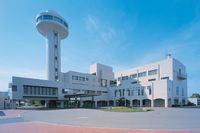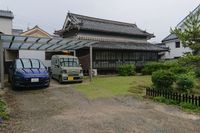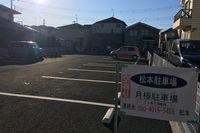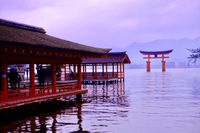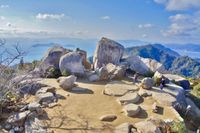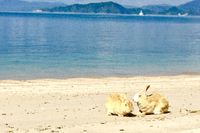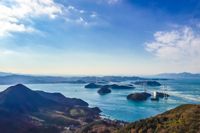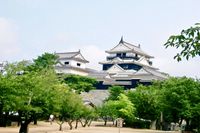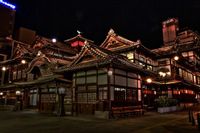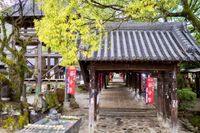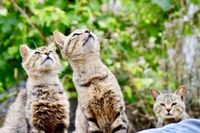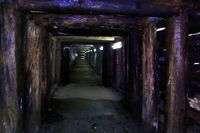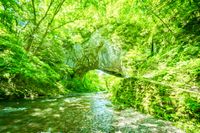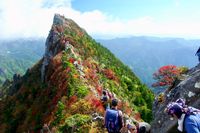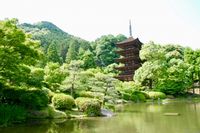Atomic Bomb Dome
広島県/広島市中区

Description
This building was the victim of the world's first atomic bomb during the World WarⅡ. It was originally opened as an establishment to display products of the prefecture. The bombing on August 6th led to the tragic destruction of 13.2 million square meters of land, a death toll of about 140,000 people, and is registered as a World Heritage Site in commemoration and remembrance of the tragedy, with the wish that such a tragedy will never happen again.
Homepage
Address
Nearby Car Night Spots
Nearby Activities
There is no nearby activities
Ranking Stations
Vanlife BASE | 45 min. from Narita Airport / Perfect for campervan travel/A seaside town rich in nature/Japanese countryside town/welcome traveler
¥7,000〜
/ per nightChiba Koseki, Kujukuri-machi, Sambu-gun
5.0
(61)(Bonfire BBQ) Chita Mihama Noma Beach Station
¥3,500〜
/ per nightAichi Noma, Mihamacho, Chita County
4.7
(42)Nearby Drive Spots
Itsukushima Shrine
A shrine built in 593 AD, by Saeki Kuramoto, and registered as a world heritage site. The main Gods are known as the Munakata three goddesses Ichiki Shima Hime, Takiribine no Mikoto and Tazukihime no Mikoto. It was famous for being worshipped by the Taira clan, and under the instruction of Taira Kiyomori, a military leader, large Torii gates were built which appear to float in the water. It is known as the "Aki no Miyajima" and is known as one of Japan's three greatest viewpoints. Along with Kasuga Taisha and Kehi Jingu shrines, the Torii gates are officially classified as one of the three greatest in Japan.
Mount Misen
This is a mountain registered as a World Heritage Site along with Itsukushima Shrine. In 806 AD, the great teacher and poet Kukai opened this mountain as a place of reverence and worship. There were also several stones known as Iwakura which were objects of Shinto worship, and has therefore been known as a long standing place of reverence and worship, consistently drawing in visitors.
Okunoshima Island
This is an island of Hiroshima in the Seto Inland Sea. It is famous as the only island that is home to a factory producing poisonous gases, and is home to around 700 rabbits that had previously been used for scientific experiments. It is a well known tour spot with plentiful facilities including a camping area, leisure facilities and onsen.
Setouchi Shimanami Kaido
This is a road of 59.4 km connecting Hiroshima Onomichi City and Imabari City in Ehime prefecture. There are six large islands in the area, which is also known as "the Bridge art museum" as ten bridges are linked here. It is popular as a cycling road, and bicycles can be rented here.
Matsuyama Castle
A castle built in 1603 by Kato Yoshiakira, it is one of Japan's 12 remaining castle towers, and was awarded 2 stars in the Michelin tourist guide. It was Japan's last complete castle tower to be built, and symbolizes the Momoyama era(1568-1600) culture in which it was built. In the morning of the weekends, one can see the traditional "castle drumming" which was originally used to escort people quickly into the castle.
Dogo Onsen
This is Japan's oldest onsen hot spring town with 3000 years of history, situated in Matsuyama city. It has been cherished by many emperors over the years, including nobles such as Prince Shotoku, as well as cultural influencers such as Kobayashi Issa and Natsume Soseki. There are plentiful food and drink establishments, including the Dogo Onsen center at the center. ※Credit:旅と温泉の無料写真素材 おんふぉと http://on-photo.com/
Ishiteji Temple
This is a temple of the Shingon Buzan sect, and built in 729 AD. The main object of worship is known as Yakushi Nyorai, and is said to be built based on the legend of the second coming of Emonzaburo. There is also a famous area where visitors walk along a long tunnel, where the buddhist ideas of the Taizo-kai (fertility and life giving) and Kongo-kai strength as hard as the toughest diamond, representing unwavering strength). It has also be awarded one star in the Michelin tourist guide.
Aoshima Island
This is an island on the Setouchi coast, in Ehime prefecture. It is also known as the cat island due to the approximately 100 wild cats that live on the island, which has made the area popular in recent years, and of course, particularly so for cat lovers! However, it is important to be aware that there are no lodging or food facilities at all - even vending machines!
Iwami Ginzan Silver Mine
This is Japan's largest silver mine, located in Shimane prefecture, and is a world heritage site. It is said that from the Sengoku to the Edo era(1467~1868), that this mine produced one third of the world's silver. The area is characteristic for its environmentally friendly approach to the surrounding area, which ensures minimum damage to mountains, no cutting of forests or digging narrow tunnels or other mining.
Taishakukyo Gorge
This is a canyon of 18 km in length in the eastern part of Hiroshima prefecture. It is famous for its natural bridge, Onbashi, formed by the erosion of limestone over the years by river water. In addition, in Lake Shinryu, there are numerous stunning views such as the greenery in spring, the autumn leaves, and the numerous water birds that inhabit the area.
Ishizuchi Shrine (Head Shrine)
This is a shrine that allowed Mount Ishizuchi to be considered a holy mountain, in 685 AD. It is one of Japan's seven worshipped mountains, with Ishizuchihiko no Mikoto as the shrine God. It is also the shrine set at the highest altitude is west Japan, at 1,982 meters. In particular, there is a very steep part of the hill, for 230 meters, where it can be only climbed by using the chain, which provides an intense experience that taps into the survival instincts.
Rurikoji Temple
This is a Soto sect temple built by Sue Hirofusa in 1471. The object of worship at this temple is known as Yakushi Nyorai, and was built to display the internal culture of Ouchi clan. It is a famous tourist location representing Yamaguchi. The temple's park area, known as Kozan Park has a 5 storied pagoda at its heart, classified as a national treasure, and is famous for its cherry and plum blossom views when in season. The pagoda tower also has illumination displays in the evening, allowing visitors to enjoy the area in all seasons.

